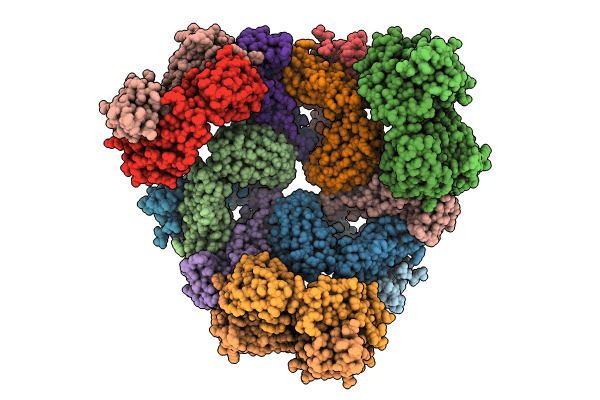
Deposition Date
2023-01-25
Release Date
2024-02-07
Last Version Date
2024-11-20
Entry Detail
PDB ID:
8CBD
Keywords:
Title:
SARS-CoV-2 Delta-RBD complexed with BA.4/5-1 and EY6A Fabs
Biological Source:
Source Organism:
Severe acute respiratory syndrome coronavirus 2 (Taxon ID: 2697049)
Homo sapiens (Taxon ID: 9606)
Homo sapiens (Taxon ID: 9606)
Host Organism:
Method Details:
Experimental Method:
Resolution:
3.52 Å
R-Value Free:
0.26
R-Value Work:
0.21
R-Value Observed:
0.22
Space Group:
C 1 2 1


